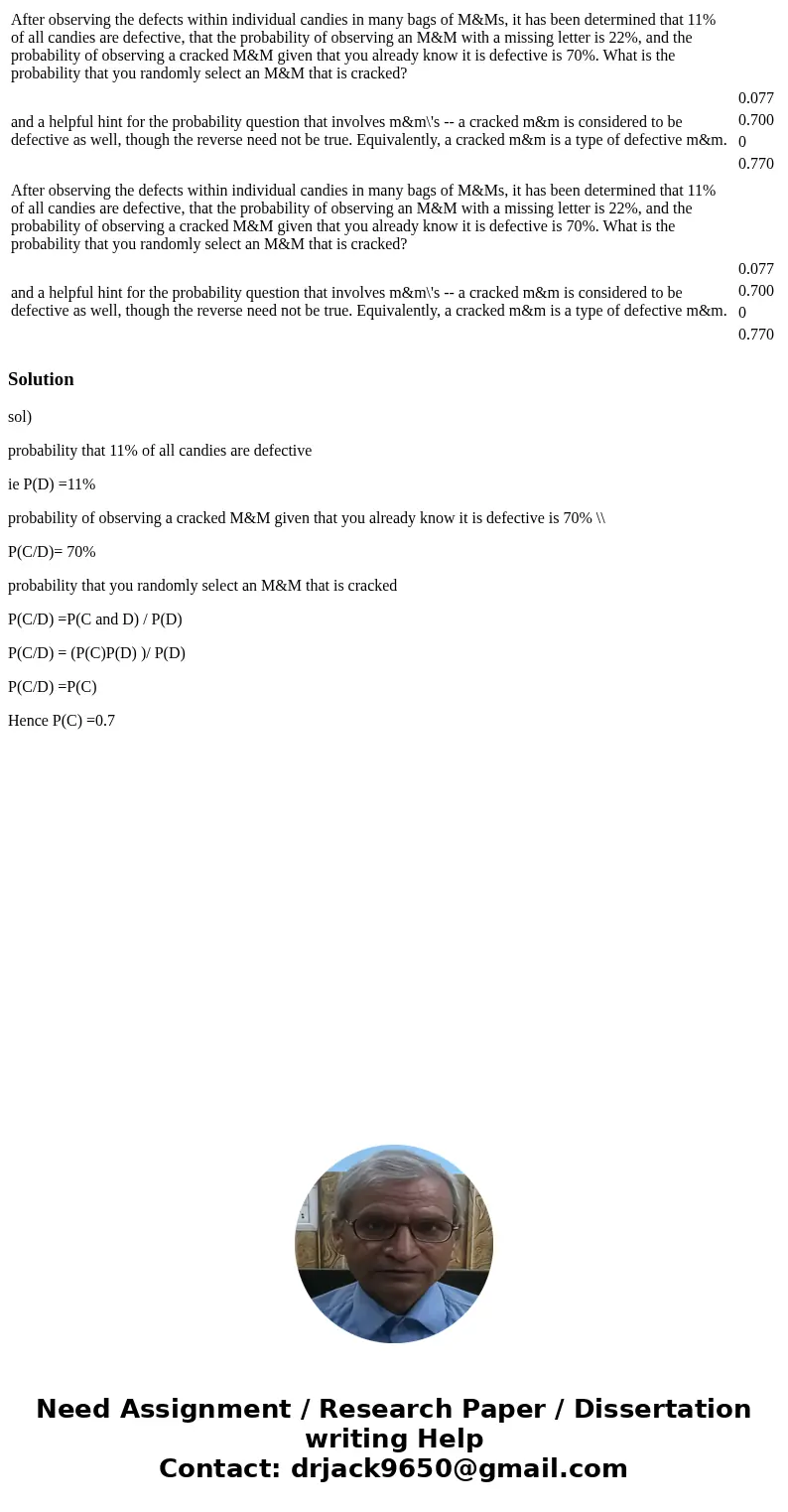After observing the defects within individual candies in man
| After observing the defects within individual candies in many bags of M&Ms, it has been determined that 11% of all candies are defective, that the probability of observing an M&M with a missing letter is 22%, and the probability of observing a cracked M&M given that you already know it is defective is 70%. What is the probability that you randomly select an M&M that is cracked? | |||||||||
| and a helpful hint for the probability question that involves m&m\'s -- a cracked m&m is considered to be defective as well, though the reverse need not be true. Equivalently, a cracked m&m is a type of defective m&m. |
|
| After observing the defects within individual candies in many bags of M&Ms, it has been determined that 11% of all candies are defective, that the probability of observing an M&M with a missing letter is 22%, and the probability of observing a cracked M&M given that you already know it is defective is 70%. What is the probability that you randomly select an M&M that is cracked? | |||||||||
| and a helpful hint for the probability question that involves m&m\'s -- a cracked m&m is considered to be defective as well, though the reverse need not be true. Equivalently, a cracked m&m is a type of defective m&m. |
|
Solution
sol)
probability that 11% of all candies are defective
ie P(D) =11%
probability of observing a cracked M&M given that you already know it is defective is 70% \\
P(C/D)= 70%
probability that you randomly select an M&M that is cracked
P(C/D) =P(C and D) / P(D)
P(C/D) = (P(C)P(D) )/ P(D)
P(C/D) =P(C)
Hence P(C) =0.7

 Homework Sourse
Homework Sourse